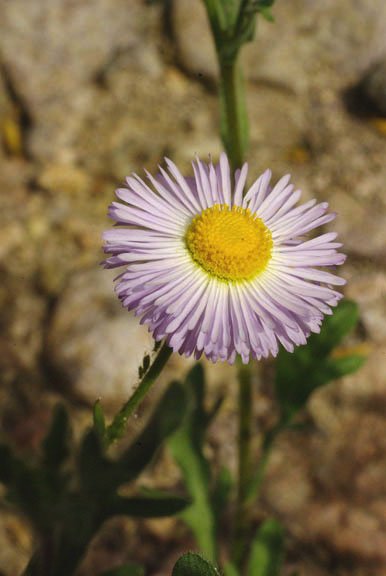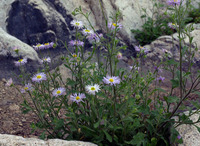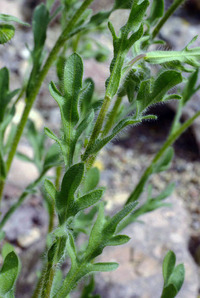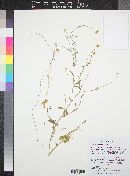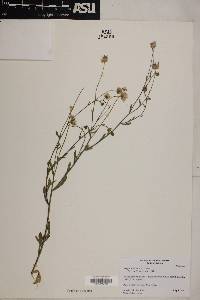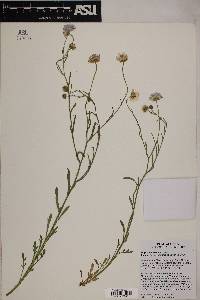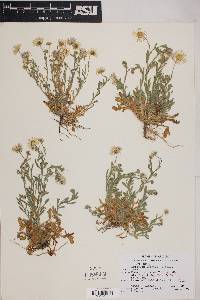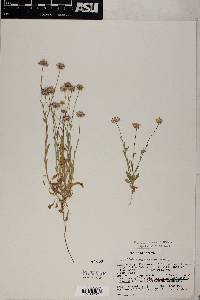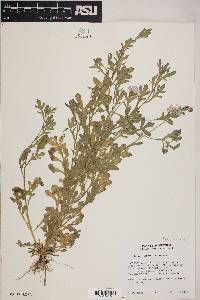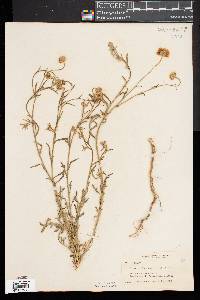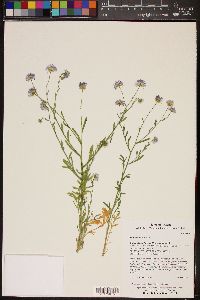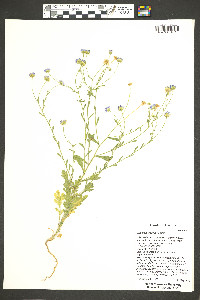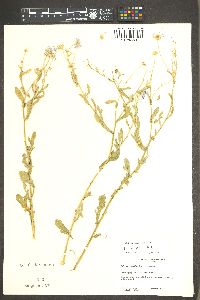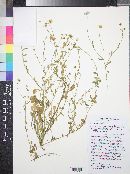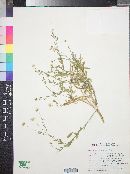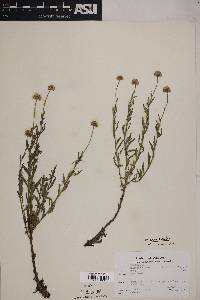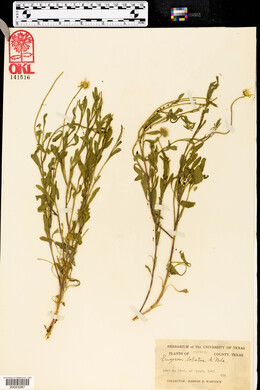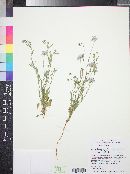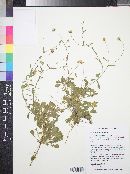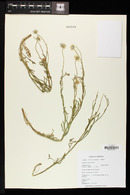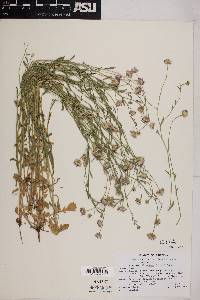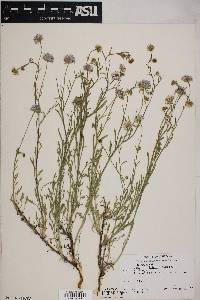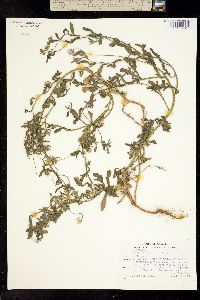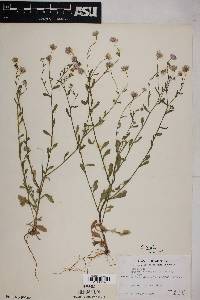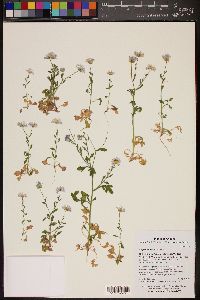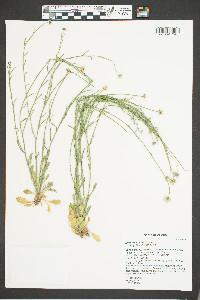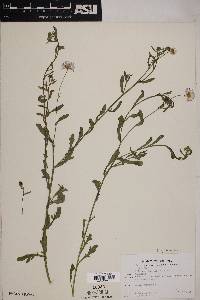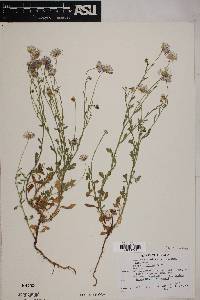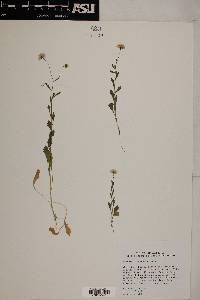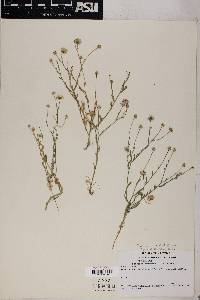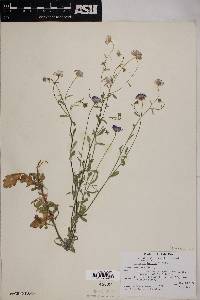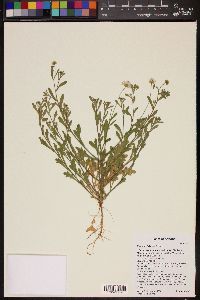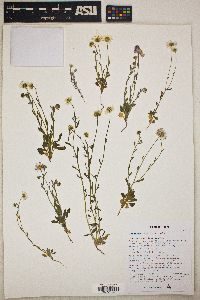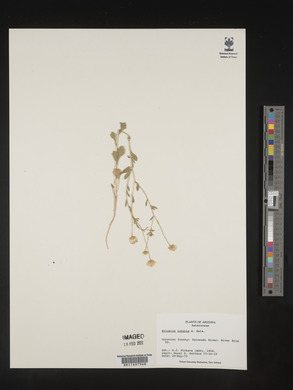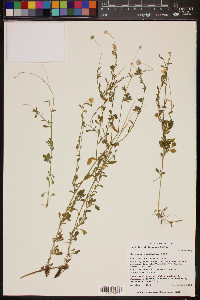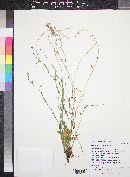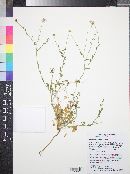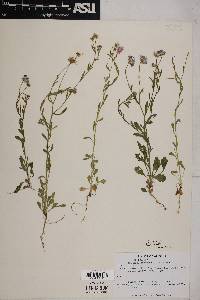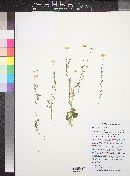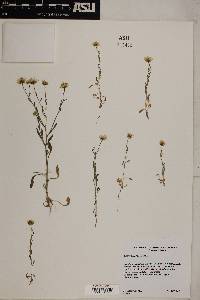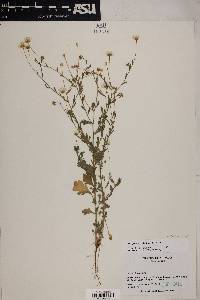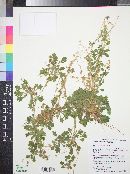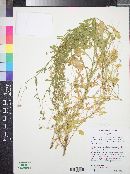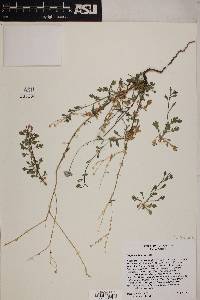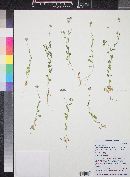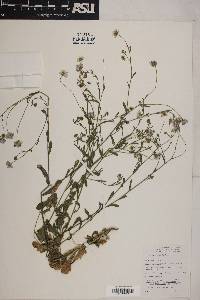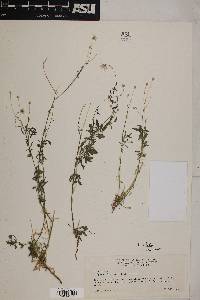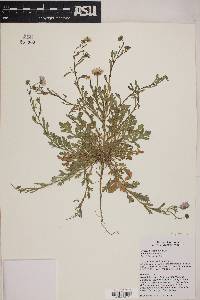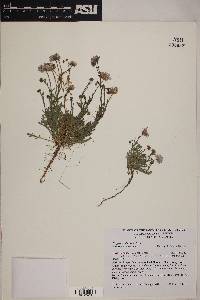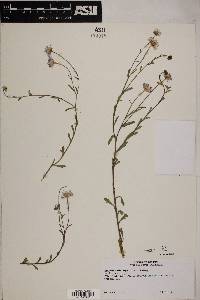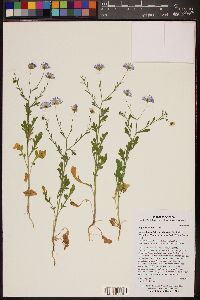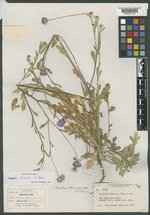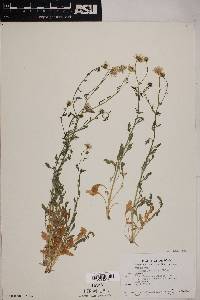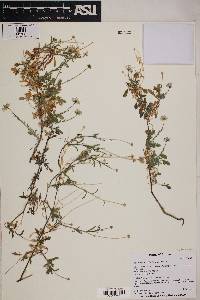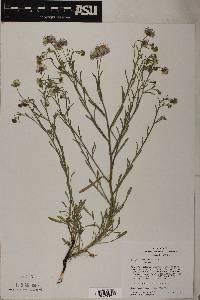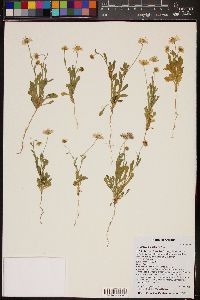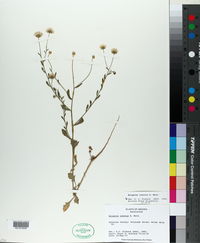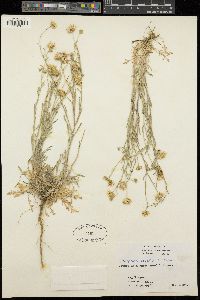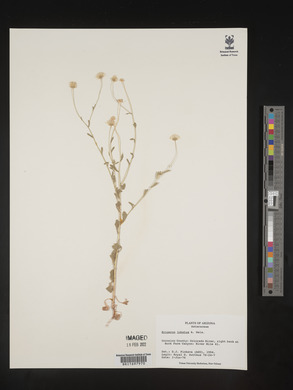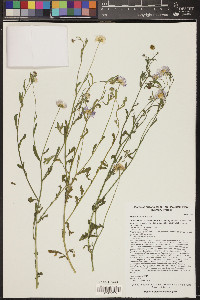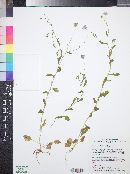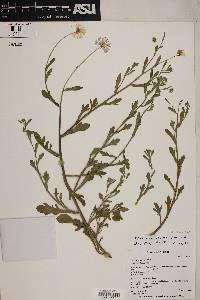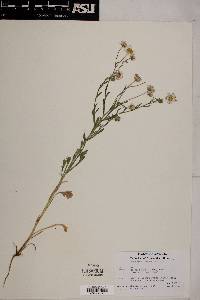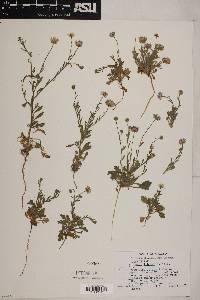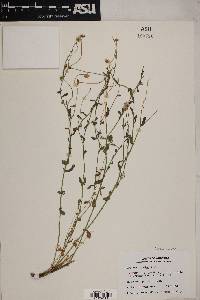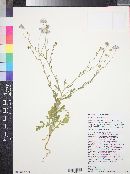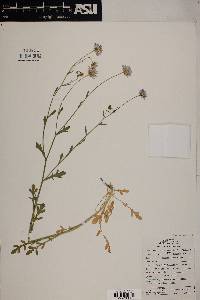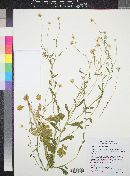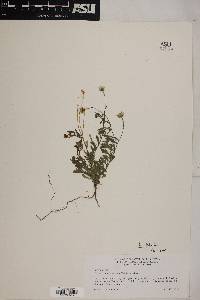
|
|
|
|
Family: Asteraceae
Lobed Fleabane, more...fleabane daisy, lobed daisy
|
Annuals, mostly 10-40(-50) cm; taprooted. Stems erect, sparsely hispido-pilose (hairs spreading, straight, 0.6-2) mm), densely stipitate-glandular. Leaves basal (persistent) and cauline; basal and proximal cauline blades obovate-spatulate, 50-100(-150) × 4-25 mm, cauline gradually reduced (lobing distally), margins pinnatifid or bipinnatifid with (1-)2-4 pairs of rounded to acute lobes, faces sparsely hispido-pilose, stipitate-glandular. Heads 1-5 (peduncles long, ebracteate). Involucres 3-4 × 6-10 mm. Phyllaries in 2-3 series (sometimes basally connate, broad, thin) sparsely hispido-pilose, stipitate glandular. Ray florets 85-110; corollas white, drying dark blue, 6-9 mm, laminae not coiling or reflexing. Disc corollas 1.8-2.9 mm. Cypselae 1.2-1.4 mm, 2-nerved, faces sparsely strigose; pappi: outer of scales (sometimes connate, forming crowns), inner of 11-12 bristles. Flowering (Jan-)Feb-May(-Oct). Stream banks, sandy lake shores, dry washes, desert or riparian scrub, sometime with creosote bush; 300-1200 m; Ariz., Calif., Nev.; Mexico (Sonora). Erigeron lobatus is characterized by persistent basal and proximal cauline leaves with rounded to acute lobes, vestiture of stipitate glands and sparse, spreading, hispido-pilose hairs, heads on relatively long, ebracteate peduncles, and broad, thin phyllaries. Erigeron divergens often is similar; its glandularity is not stipitate and its nonglandular hairs are shorter and denser.
FNA 2006, Kearney and Peebles 1969, McDougall 1973 Duration: Biennial Nativity: Native Lifeform: Forb/Herb General: Herbaceous annuals to biennials, 10-50 cm tall, stems several, erect, herbage densely stipitate-glandular, with straight or spreading sparse to dense white hairs, these 0.5-2 mm long, plants taprooted and with woody rhizomes. Leaves: Alternate, with both basal (persistent) and cauline, basal and proximal cauline blades obovate-spatulate, 50-150 mm long and 4-25 mm wide, sometimes with lobed to dentate margins, cauline gradually becoming reduced, linear to oblanceolate and entire or lobing distally, margins pinnatifid or bipinnatifid with 1-4 pairs of rounded to acute lobes, faces sparsely hispido-pilose and stipitate-glandular, blades borne on slender peduncles 3-10 cm long. Flowers: White purple, or lavender, drying dark blue, borne in heads with both ray and disk flowers; ray florets 85-110, with corollas 6-9 mm long, the laminae not coiling or reflexing, disc corollas 2-3 mm long, with turbinate to hemispheric involucres 3-4 mm high and 5-8 mm in diameter, phyllaries narrowly elliptic- to linear-lanceolate, 30-150 in 2-5 series, 1-3-nerved, the nerves golden-resinous and usually flat, rarely broadly keeled to convex, flowers solitary at branch tips or borne in groups of 1-5 (peduncles long, ebracteate). Fruits: Cypselae (achenes) tan, oblong to oblong-obovoid, 1-1.5 mm long, 2-nerved, with sparsely strigose faces. Outer pappus of scales, these sometimes connate, forming crowns, inner pappus of 11-12 bristles. Ecology: Found on stream banks, sandy lake shores, dry washes, plains, mesas, and rocky slopes, in desert or riparian scrub, sometimes with creosote bush, from 1,000-4,000 ft (305-1219 m); flowering January-October. Distribution: Arizona, California, Nevada; Mexico. Ethnobotany: Specific uses for this species are unknown, but other species in the genus have uses; decoction of plant taken for backache, stomachache, menstrual cramps, or used as a contraceptive; salve of toasted, crushed plant and grease rubbed on painful area, and sprinkled on sores, ulcers, cuts and wounds. Synonyms: None Editor: LCrumbacher2012 Etymology: Erigeron comes from the Greek eri, "early," and geron, "old man," thus meaning "old man in the spring," referring to the fluffy, white seed heads and the early flowering and fruiting of many species, while the meaning of lobatus is unknown. |
This project was made possible in part by the Institute of Museum and Library Services [MG-70-19-0057-19].
Powered by Symbiota

